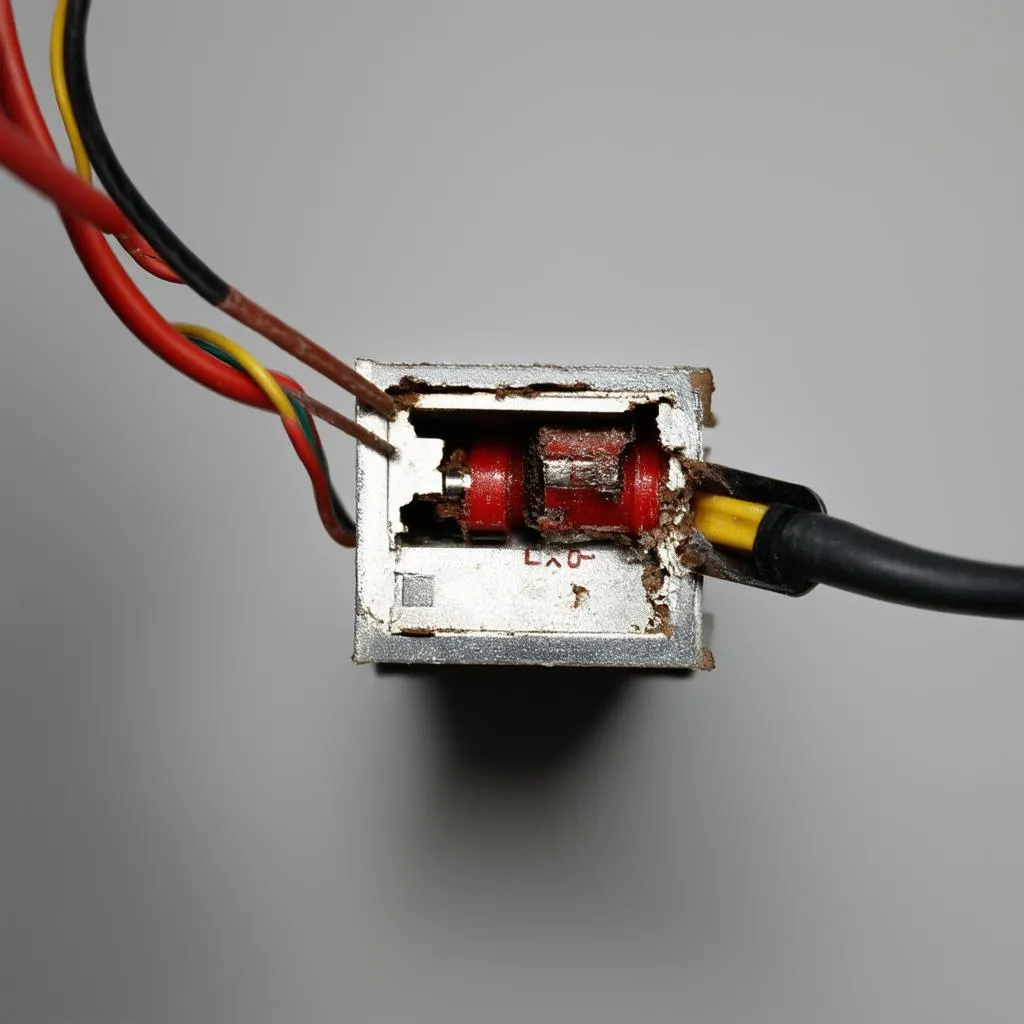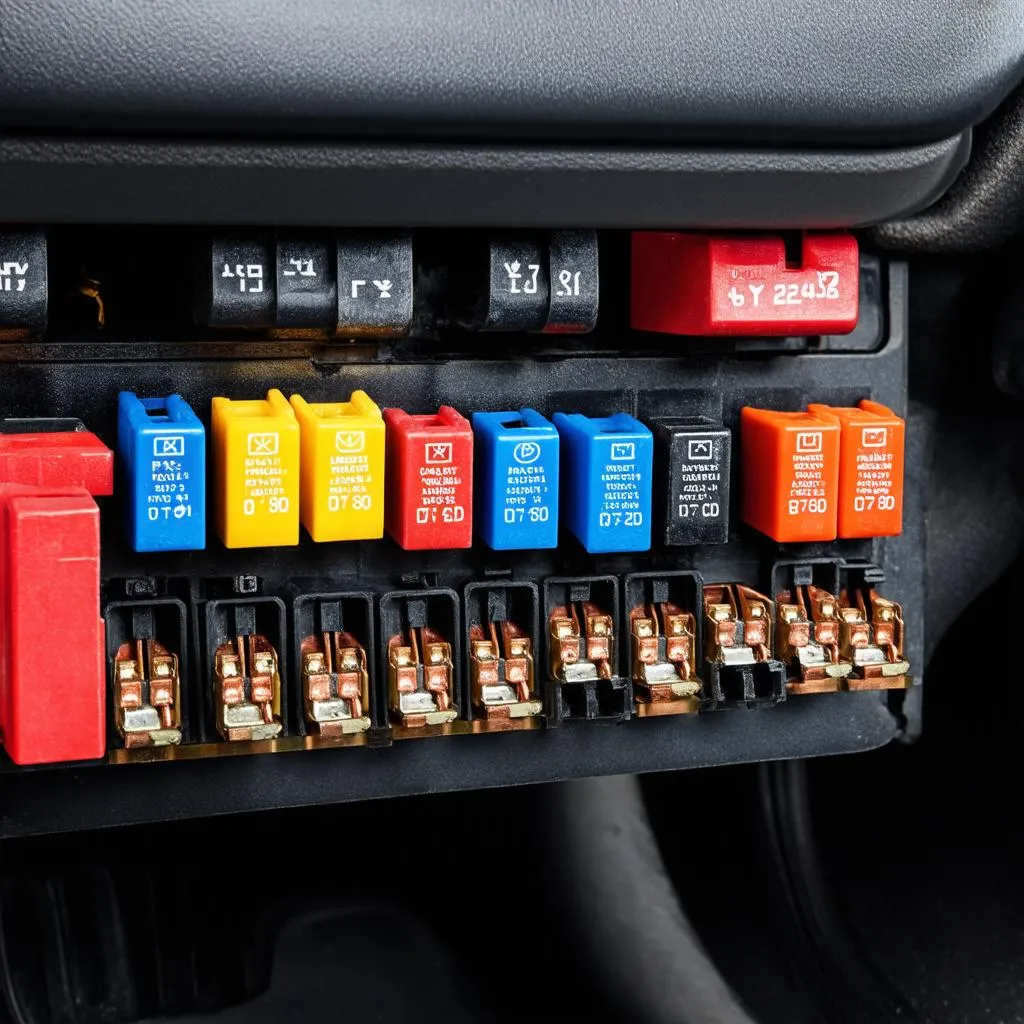You’re cruising down the highway, the rumble of your trusty 6.7L Powerstroke a comforting soundtrack to your journey. Suddenly, the engine stutters, dashboard lights flicker into a frantic dance, and your heart sinks. One culprit that often rears its head in these situations is a blown fuse, particularly the OBD power fuse. This tiny component plays a big role in keeping your beast running smoothly.
What’s the Deal with the 6.7l Powerstroke Obd Power Fuse?
Think of the OBD power fuse as a diligent gatekeeper for your truck’s electrical system, specifically the On-Board Diagnostics (OBD) port. This port is like the communication hub for your truck, allowing mechanics and diagnostic tools to understand what’s happening under the hood. When the fuse blows, it’s like cutting off communication – your diagnostic tools become useless, making troubleshooting a real headache.
Why is This Little Fuse So Important?
1. Diagnosis is Key: Just like a doctor needs to diagnose a patient before treatment, understanding what’s wrong with your truck relies heavily on that OBD port. A blown OBD power fuse throws a wrench into the works, making it tricky to pinpoint the root cause of any engine trouble.
2. Safety First: A blown fuse is often a symptom of a larger electrical issue. Ignoring it can be like ignoring a flashing warning sign – potentially leading to more severe (and costly!) problems down the line.
3. Emissions and Performance: Many modern diesel engines, including the 6.7L Powerstroke, rely on sophisticated electronic systems to manage emissions and optimize performance. A blown OBD power fuse can disrupt these systems, potentially leading to decreased fuel efficiency and increased emissions.
 blown fuse
blown fuse
Troubleshooting Time: Common Causes and Fixes
- Short Circuit: A sudden surge of electricity, often caused by a faulty component or wiring, can overload the OBD power fuse, causing it to blow.
- Overloaded Circuit: Plugging in too many devices into the OBD port or using power-hungry accessories can also stress the fuse.
- Faulty Fuse: Sometimes, the fuse itself might be the culprit – a manufacturing defect or wear and tear can cause it to blow prematurely.
Finding the Culprit:
- Check Your Owner’s Manual: Your truck’s manual will pinpoint the exact location of the OBD power fuse, often in the fuse box under the dashboard or hood.
- Visual Inspection: Carefully examine the fuse for any signs of damage – a broken wire or a blackened glass tube usually indicate a blown fuse.
- Multimeter Test: For a definitive answer, use a multimeter to test the fuse for continuity. No continuity means it’s time for a replacement.
Replacing the Fuse:
Replacing a fuse is usually a straightforward process. Just make sure you:
- Disconnect the Battery: Safety first! Disconnect the negative battery terminal to avoid any electrical mishaps.
- Use the Correct Fuse: Refer to your owner’s manual for the correct amperage rating for the OBD power fuse. Using the wrong fuse can lead to further damage.
- Gentle Installation: Carefully align and insert the new fuse into the slot. Forcing it can damage the fuse box.
 fuse box
fuse box
Beyond the Technical: A Touch of Perspective
In many cultures, breakdowns are often seen as opportunities for reflection and learning. While a blown OBD power fuse might be frustrating, it can also be a reminder to pay attention to the subtle cues our vehicles give us. Just like we need regular check-ups, so do our trucks. Regularly inspecting your fuses and addressing any electrical gremlins early on can save you from bigger headaches (and repair bills!) down the road.
Need a Helping Hand?
We understand that dealing with electrical issues can be daunting. If you’re unsure about any of these steps or suspect a more serious issue, don’t hesitate to reach out! Our team of auto experts is here to help 24/7. Contact us via Whatsapp at +84767531508 and we’ll guide you through the process.
Happy Troubleshooting!